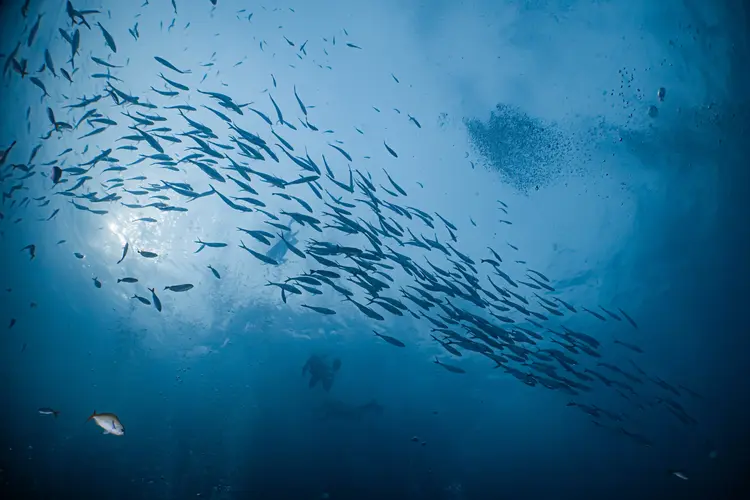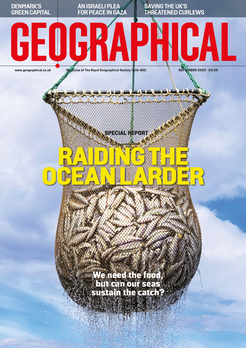
Find out more about exclusive economic zones, the biggest ones in the world, and what disputes occur because of them
By
Nations have clear, delineated borders, marking out the separation between one country’s land and another. But these boundaries don’t just stop at the shore. The same applies to waters relatively close to countries’ shores, creating areas known as exclusive economic zones (EEZ).
But where exactly do they begin and end? And which countries have the largest ones?
Here we unpack the world of EEZs, the tensions they can bring with them and why their existence is pivotal in the modern world…
What is an exclusive economic zone?
Put simply, an exclusive economic zone is an area of the ocean, typically extending around 200 nautical miles (230 miles) beyond a nation’s territorial sea. Within this area, a nation has jurisdiction over both living and non-living resources.
Enjoying this article? Check out our related reads:
EEZ’s were first adopted through the 1982 United Nations Convention on the Law of the Sea, and created to settle potential disputes between nations over offshore businesses such as fishing and energy production.
They are different from territorial waters, which extend up to 12 nautical miles from the coast and allow the country full sovereignty, like on land. EEZs extend further, but only allow rights to economic activities (such as fishing, mining and energy production).
Today, established EEZ territory takes up around 42 per cent of the oceans around the world. Beyond these delineated segments, there exists the high seas – areas that are accessible to all countries. Protecting this area of the sea is the High Seas Treaty, which currently has 51 nations’ approval, but needs 60 to be fully ratified.
Under international law, within its defined EEZ, a coastal nation has rights to explore, exploit and conserve the seabed, subsoil and waters above it; establish artificial islands, structures, marine scientific research bases, and protect and preserve the entire marine environment.
Despite countries having their own EEZ, other nations may still access their waters. For example, vessels are allowed to pass through as long as they do not carry out activities reserved for the state.
EEZs are incredibly useful for organising the installation of international submarine cables, pipelines and technological implementations of the energy sectors. In addition, EEZs have also been useful in determining which nation is responsible for removing space debris from the ocean waters.
Who has the biggest EEZ?
Due to having numerous overseas territories across all the world’s oceans, France has the largest exclusive economic zone of any country. Combined, French overseas territories and departments have an EEZ spanning 3,791,998 square miles, accounting for 96.7 per cent of France’s EEZ. In total, France’s EEZ is around 10.7 million square kilometres.

The second large EEZ is the US’s, which includes areas in the Caribbean Sea, the Gulf of Mexico and three oceans, spanning a total of more than 4.3 million square miles, representing almost 8 per cent of the world’s total EEZs. The size of the US’s EEZ is larger than its actual land size.
Other countries with large EEZs include Australia, New Zealand, Russia, the UK and Indonesia.
Transboundary stocks
While EEZs may be clearly defined, fish populations are not so clear-cut. As certain populations migrate between EEZs – and sometimes into the high seas – such movements could cause tensions between countries trying to decipher who owns them.
To ensure that fisheries avoid boundary disputes, the Food and Agriculture Organisation of the UN (FAO) has enlisted a specific set of guidelines for transboundary stock populations of fish that move between the boundaries of two or more nations.
Fish stock can be both straddling and transboundary. Transboundary stocks are the stock of fish within the range of the exclusive economic zones of at least two nations, while straddling stocks are within both the high seas and an EEZ.
One example of transboundary stocks is tuna in the Western and Central Pacific Ocean. Multiple nations harvest the same populations as they move between various EEZs and the high seas. Another example is that of cod and haddock in the North Atlantic, fish which cross between the EEZs of the UK and EU countries, including Norway and Iceland.
Without transboundary stocks and the guidelines surrounding them, countries may overexploit stocks, harvesting more in the worry that if they don’t then another country will. Against the backdrop of an ever-warming planet, transboundary stocks are also becoming more common as ocean temperatures force populations to new seas.
Do disputes occur?
In short, yes. Despite EEZs being introduced to stop quarrels between nations, disagreements still exist. Overlaps in EEZ claims can cause international disputes, such as the high-profile disagreements between China and Japan over EEZs in the East China Sea.
Both countries claim an EEZ of 200 nautical miles from their coasts, yet the sea separating China and Japan spans only 360 nautical miles. As such, both nations have disputes about natural resources alongside stocks of fish.

As well as this, China and the US have been in disagreement since 2001 over whether China has the right to regulate the US’s reconnaissance activities in its EEZ.
Under the interpretation of guidelines that the US and most countries agree to, states do not have the right to regulate foreign military activities in their EEZ beyond 12 nautical miles from their coasts. However, under the Chinese interpretation, China does have the right to regulate foreign military activities across all of its EEZ.
Brexit also brought fresh tensions to the relationship between the EU and the UK regarding fisheries. Initially, the UK wanted the EU to give up 80 per cent of its existing catch share in UK waters, which the EU countered with a much lower offer of between 15 and 18 per cent.
In the end, both sides agreed that the EU would return 25 per cent of its catch share, phased in over a five-and-a-half-year period. The biggest increases for the UK are concentrated in a few large offshore fisheries such as western mackerel and North Sea herring and sole.
Today, UK and EU fishers continue to have mutual access to non-quota stocks in each other’s waters (such as edible crab, whelk, European lobster, pilchard and greater Atlantic scallop). However, UK and EU fishers require licenses to access each other’s waters.




